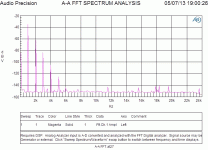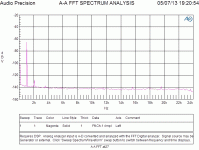Why would you need to add extra regulation to the power supply? Cost is a disadvantage. There is usually designed into the power supply, a mains transformer that provides significant regulation on its own. All you need is reasonable DC for push pull or slightly better smoothing for single ended. Take advice from manufacturers by looking at their schematics. The only time voltage drop is required is for the screen grids on some output valves that require say 200volts and the anodes require 450volts. A resistor and if you are fussy zener diode can be employed. We used to use 0A2 cold gas discharge valves that sit around 150volts.
If you mean solid state amplifiers, the disadvantage is power loss and cost.
Most if not all good designs do not require extra regulation.
Most if not all good designs do not require extra regulation.
I think you should also consider how sensitive the amp is for hum and noise on the supply. A non-regulated supply not only has mains ripple but also all kinds of noise and junk coming in through the mains and the mains transformer.
A good regulator makes short shrift of all that junk, which can significantly improved the sound. Some amps benefit more than others but it always helps.
Jan
A good regulator makes short shrift of all that junk, which can significantly improved the sound. Some amps benefit more than others but it always helps.
Jan
Is there any DISadvantage to using REGULATED power supplies for power amplifiers?
Is this one of those how long is a wet piece of string and what sort of tea bags should I use with my KTxeexees questions?
Added cost.
Added power loss.
Added complexity.
Technical Ecstasy.
What disadvantages can you suggest?
I should have clarified: I am talking about a bipolar supply (+/- 40 volts) for a solid state amplifier running in bridge mode at 200 watts into 8Ω. Yes, cost is a disadvantage. The advantages would be lower ripple and noise, avoidance of exceeding the SOA of output devices, and elimination of power supply modulation on the output signal.
Last edited:
Quite a number of diyAudio members who build Class-A amplifiers, choose to include a "semi-regulated" DC power supply, namely a "ripple eater" a/k/a "capacitance multiplier", between the enormous bank of filter capacitors and the amplifier circuitry.
These folks use ripple eater circuits to remove much of the hum and noise and "junk coming in through the mains". An example schematic is shown below, from the website of member "bonsai". Searching around on diyAudio will unearth several dozen others.
_
These folks use ripple eater circuits to remove much of the hum and noise and "junk coming in through the mains". An example schematic is shown below, from the website of member "bonsai". Searching around on diyAudio will unearth several dozen others.
_
Attachments
Thanks Mark, I suggest capacitance multiplier also.
Dan.
A capacitance multiplier is a 'regulator' that shaves a couple of volts off the supply peaks and in so doing gets rid of ripple and noise but does not provide 'regulation' per se. Power amplifier supplies typically sag and ripple increases proportional to amplifier output power. A capacitance multiplier output will track a couple of volts below the sagging raw supply peak voltage and will deliver a 'clean' but saggy supply to the power amplifier, so iow power supply AF/HF noise is essentially eliminated but VLF supply variations still get through but this is usually not of great consequence. You will lose some peak power capability but the 'clean power' benefit is much greater IME. The capacitance multiplier pass transistor will dissipate heat but much lessheat than a 'rigid' regulator stage.I should have clarified: I am talking about a bipolar supply (+/- 40 volts) for a solid state amplifier running in bridge mode at 200 watts into 8Ω. Yes, cost is a disadvantage. The advantages would be lower ripple and noise, avoidance of exceeding the SOA of output devices, and elimination of power supply modulation on the output signal.
Dan.
Is there any DISadvantage to using REGULATED power supplies for power amplifiers?
Yes
When you use a regulated power supply its error amplifier can introduce distortion and modulate the power supply rails.
Observation comes from a correspondent to the Linear Audio regulator shootout years back. So I went back to the drawing board and did the following experiment -- inject an audio signal onto the power supply rail (from a very low THD source) and see if there are any harmonics. The Super-Teddy was very, very quiet, but was problematic listening:
Attachments
There is another way of mitigating mains issues which is to protect the amplifier sensitive circuitry with separate rail CRC filters. I also used a diode to prevent these rail filters from supplying current to the output stage. This allowed me to use far smaller capacitors. The overall capacitance reduction was 80%.
Where does this "extra headroom" come from? Does a signal peak somehow conjure up a rise in the line voltage? Can you only listen to "loud peak" music when the line voltage in your neighborhood is higher?A regulated PSU means that you have no extra headroom for rare signal peaks.
So you are saying that SOME power supply regulators can cause distortion. Then why not use a hi voltage/current Jung or Sjostrom regulator?When you use a regulated power supply its error amplifier can introduce distortion and modulate the power supply rails. The Super-Teddy was very, very quiet, but was problematic listening.......... On the other hand, the Jung SR and Sjostrom are appropriately damped and were among the most highly rated
I also used a diode to prevent these rail filters from supplying current to the output stage.
This allowed me to use far smaller capacitors. The overall capacitance reduction was 80%.
The first time I saw that done was in the Audio Research D76A tube amplifier, with the driver circuitry decoupled from the output stage by a 1N4007. Interestingly enough, their D150 did not do this.
Last edited:
>> A regulated PSU means that you have no extra headroom for rare signal peaks.
> Where does this "extra headroom" come from? Does a signal peak somehow conjure up a rise in the line voltage?
The way I always saw it: to get a regulated 250V I would have to start with 300V-350V before the regulator. OTOH if I built the stage with good PSRR I could feed it all 350V.
I know there is a large branch of religion worshiping regulated supplies for audio and this is heresy.
> Where does this "extra headroom" come from? Does a signal peak somehow conjure up a rise in the line voltage?
The way I always saw it: to get a regulated 250V I would have to start with 300V-350V before the regulator. OTOH if I built the stage with good PSRR I could feed it all 350V.
I know there is a large branch of religion worshiping regulated supplies for audio and this is heresy.
- Status
- Not open for further replies.
- Home
- Amplifiers
- Power Supplies
- High Voltage Regulated Power Supplies for Power Amplifiers



